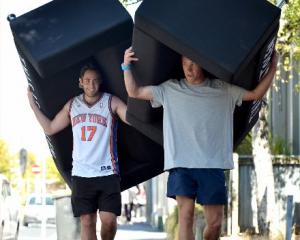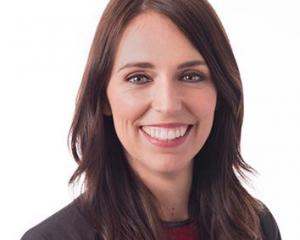
The September rate was the highest for nine years, with 150,000 people out of work.
Although the level of unemployment is lower than the early-1990s recession, the rate of increase in unemployment has been every bit as severe.
One out of every 31 New Zealand workers has become unemployed in the past 18 months.
Westpac chief economist Brendan O'Donovan said he always expected the data to reflect the recession just past rather than the recent flush of strong data.
The labour market tended to lag economic growth.
The important part of the data was the 0.7% fall in hours worked, coming as it did on top of a 1.9% fall last quarter, he said.
Such weak hours-worked figures suggested that the economy might have grown by less than the 0.4% GDP forecast for September.
The participation rate fell from 68.4% to 68%.
Unemployment hit the same groups as in previous recessions, Mr O'Donovan said.
Unemployment among youth, Maori and Pacific Islanders was soaring.
In the 15 to 19 age group, unemployment was 25.1% and Maori had an unemployment rate of 14.2%.
Unemployment in Northland was 9.3% and in Gisborne, it was 10%.
In Otago it was 5.6%.
Male unemployment had risen much faster than female unemployment as the disproportionately male construction and manufacturing industries were hit hardest.
The North Island was experiencing far higher unemployment than the South Island.
Mr O'Donovan expected the September quarter to be the last of sharply rising unemployment.
For the next year, he forecast the unemployment rate to remain close to its current level, with movements up or down of a couple of tenths of a percent.
BNZ capital markets economist Stephen Toplis estimated a further 9000 people would lose their jobs by December, helping take the unemployment rate to 7%.
"In our opinion, it won't be until the second half of next year until corporates start taking on staff in any meaningful number.
"Accordingly, we stick to our view that the unemployment rate will peak at around 7.5%," Mr O'Donovan said.
Social Development and Employment Minister Paula Bennett attempted to put a positive spin on the latest unemployment figures.
While acknowledging the number of unemployed had risen, she said there had been a drop in the number of people requiring an unemployment benefit.
For the month of October, the total number dropped below 60,000 to 59,955.
In September, 60,600 were on the benefit, she said.
The Government's "investment" in 300 more frontline staff at Work and Income had made a difference in helping people find work, Ms Bennett said.
"The rate at which people coming through their doors [and] leave without needing a benefit has risen to over 40% last week."
In September, the youth benefit numbers were 19,845.
October's benefit figures were still high, with 19,461 people between 15 and 24 on the unemployment benefit, she said.
But that would have been much higher if it were not for the Job Ops and Community Max schemes, which had created nearly 2400 employment opportunities for young people.
"We know the unemployment benefit numbers will rise again, particularly as students join the job market over the summer break.
"It's too soon to say we're through the worst; but expect to see more rolling maul initiatives from this Government," Ms Bennett said.
Council of Trade Unions secretary Peter Conway said more could be done to assist the unemployed.
"Now would be a good time for the Government to increase funding for skills training for those unemployed seeking a job," he said.






